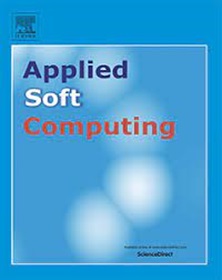Dynamic q-rung orthopair hesitant fuzzy decision-making model based on Banzhaf value of fuzzy measure
IF 7.2
1区 计算机科学
Q1 COMPUTER SCIENCE, ARTIFICIAL INTELLIGENCE
引用次数: 0
Abstract
Multi-attribute decision-making in dynamic fuzzy environments holds significant practical importance in fields. The changing fuzzy environmental factors and the hesitant psychology during the dynamic period commonly involve potential historical impacts of decisions and dynamic fuzzy intercorrelation. Quantitative indicators of attribute importance derived from fuzzy measures can account for intercorrelation but cannot ensure the dynamic feedback of historical decisions. For these reasons, the existing fuzzy decision-making methods have failure and poor stability when dealing with complex, hesitant dynamic fuzzy decision-making problems. Therefore, this paper aims to construct a dynamic decision-making model within the q-rung orthopair hesitant fuzzy(q-ROHF) environment. First, this paper derives the q-ROHF cross-entropy and four combinations of entropy formulas to derive the calculation method for the fuzzy measure of dynamic attributes. The Banzhaf value is used as a weighting metric to quantify the degree of impact of dynamic attributes to the decision result. Second, based on the Banzhaf value, a dynamic weighting algorithm incorporating a historical feedback mechanism and dynamic intercorrelation is proposed. Further, this paper derives a fuzzy preference relation(FPR) using the q-ROHF generalized fuzzy distance and presents an algorithm for updating the dynamic FPR matrix. Finally, a dynamic FPR-based AQM method is used to construct the dynamic decision-making model. The feasibility and effectiveness of the decision-making model in response to changing complex factors are demonstrated through two distinct real-world cases. Through robustness analysis and advantage analysis, it has been verified that the model exhibits superior dynamic decision-making stability and hesitant decision-making stability compared to existing models. The model can be a powerful tool for dealing with dynamic decision-making problems that involve hesitation and uncertainty.
基于模糊测度Banzhaf值的动态q阶正交犹豫模糊决策模型
动态模糊环境下的多属性决策具有重要的现实意义。动态时期变化的模糊环境因素和犹豫心理通常涉及决策的潜在历史影响和动态模糊相互关系。由模糊测度导出的属性重要度定量指标可以解释相关性,但不能保证历史决策的动态反馈。由于这些原因,现有的模糊决策方法在处理复杂、犹豫的动态模糊决策问题时存在失效和稳定性差的问题。因此,本文旨在构建q阶矫形犹豫模糊(q-ROHF)环境下的动态决策模型。首先,推导出q-ROHF交叉熵和四种熵的组合公式,推导出动态属性模糊测度的计算方法;采用Banzhaf值作为加权度量,量化动态属性对决策结果的影响程度。其次,基于Banzhaf值,提出了一种结合历史反馈机制和动态相关的动态加权算法。在此基础上,利用q-ROHF广义模糊距离导出了模糊偏好关系,并给出了动态偏好关系矩阵的更新算法。最后,采用基于动态fpr的AQM方法构建了动态决策模型。通过两个不同的现实案例,验证了该决策模型在应对复杂因素变化时的可行性和有效性。通过鲁棒性分析和优势分析,验证了该模型相对于现有模型具有更好的动态决策稳定性和犹豫决策稳定性。该模型可以成为处理包含犹豫和不确定性的动态决策问题的有力工具。
本文章由计算机程序翻译,如有差异,请以英文原文为准。
求助全文
约1分钟内获得全文
求助全文
来源期刊

Applied Soft Computing
工程技术-计算机:跨学科应用
CiteScore
15.80
自引率
6.90%
发文量
874
审稿时长
10.9 months
期刊介绍:
Applied Soft Computing is an international journal promoting an integrated view of soft computing to solve real life problems.The focus is to publish the highest quality research in application and convergence of the areas of Fuzzy Logic, Neural Networks, Evolutionary Computing, Rough Sets and other similar techniques to address real world complexities.
Applied Soft Computing is a rolling publication: articles are published as soon as the editor-in-chief has accepted them. Therefore, the web site will continuously be updated with new articles and the publication time will be short.
 求助内容:
求助内容: 应助结果提醒方式:
应助结果提醒方式:


